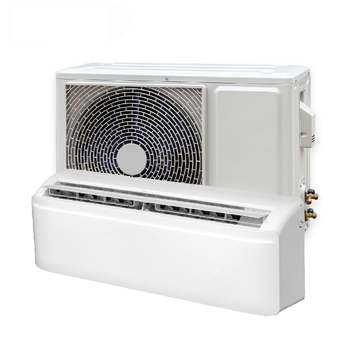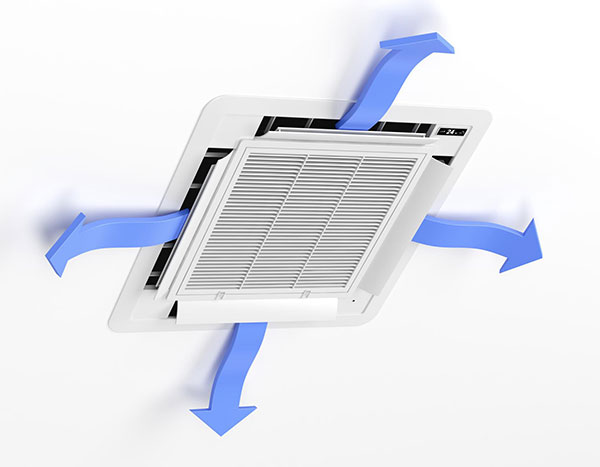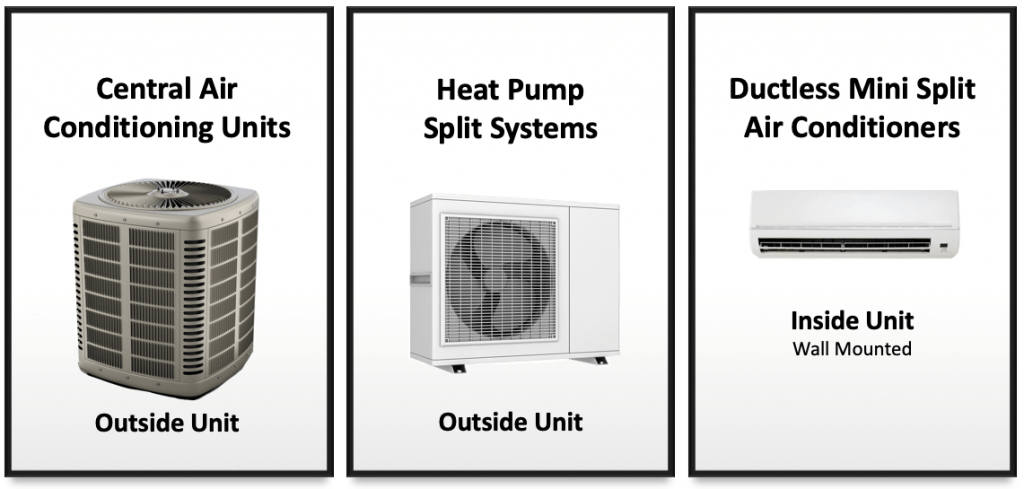Main Parts of an Air Conditioner and Their Function

Having a basic understanding of what parts make up your air conditioner and how those parts work together. Can help you better identify a problem or determine, if your air conditioner is running efficiently as it should.
If you have a split unit system. There is the ‘hot side’ which is usually outside sometimes called the ‘outdoor unit’ or ‘condensing unit’. There is also the ‘cold side’ which is usually inside sometimes called the ‘indoor unit’ or ‘evaporator unit’.
Though the window unit has both the cold side and the hot side. The same procedure goes for central air conditioner, and cold room system
Let’s get familiar with them;
Refrigerant:
Refrigerant (also known as coolant) is a special fluid that is vital to a cooling system. It operates in a close loop and carries heat from the inside of the building outside. We use refrigerant because it changes its state from liquid to gas at a convenient temperature for the refrigeration cycles.
Refrigerant starts inside the compressor, where the reduction of volume turns it into a high-pressure gas about 66°C. It moves to the outdoor condenser coil where condensation takes place. The gaseous refrigerant then heads towards the indoor coil and is now lowered to about 38°C. The gas moves through an expansion valve, dropping its temperature and pressure and changing into liquid about -7°C.
The cold refrigerant now passes through the evaporator coil and the warmer indoor air blowing across the coil goes through the evaporation, warming the refrigerant and lowering the indoor temperature. The refrigerant, now approximately 10°C, returns to the compressor to restart the cycle.
Compressor:
A compressor is a mechanical device that increases the pressure of the refrigerant by reducing its volume. It basically increases the refrigerant pressure which in turn increases the temperature. Combined law of Boyle’s Law, Charle’s Law, and Gay-Lussac’s Law, which states that increased pressure of a gas increases the temperature.
We heat up the refrigerant in order to get its temperature higher than the outdoor temperature. Since heat naturally flows from a hotter to colder bodies. In order to dispense heat outdoors, the refrigerant must be hotter than the air outdoors.
The compressorwhich is located at the outdoor unit of the systems, is the heart of the air conditioning system.
Condenser Coil:
The condenser coil is located in the outdoor unit of an air conditioning system or the hot side. It receives high pressure and high-temperature refrigerant from the compressor. It is the opposite of the evaporator coil which holds cold refrigerant while the condenser coil holds hot refrigerant.
The condenser coil helps facilitate heat transfer to the outdoor air. The refrigerant releases heat energy with the aid of the condenser fan, which blows air over the coils. As it leaves the coil, after condensation it then flows to the expansion valve. Which depressurizes the refrigerant and cools it down.
Expansion Valve:
The expansion valve (mostly thermal), depressurizes the liquid refrigerant to allow expansion or change of state from a liquid to vapor in the evaporator. Though the refrigerant leaving the condenser has had heat dispersed from it, it is still quite warm to enter the evaporator coils. It must be cooled down.
Again using the combined gas law, which states that reduced pressure will lead to the reduced temperature of a gas. It also controls the amount of refrigerant flow entering the evaporator.
Evaporator Coil:
The evaporator coil is where the air conditioner actually picks up the heat from inside the building.
The series of combined piping receives the depressurized, liquid refrigerant from the expansion valve. When your indoor air blows over the cold coils, the heat from inside the building gets absorbed. This is because of the 2nd Law of thermodynamics which states that heat flows naturally from hot to cold.
Just like condenser coil needs the help of the condenser fan to facilitate heat transfer, the evaporator coil relies on the indoor air handler’s fan (aka the blower) to blow air over the coils.
As the refrigerant absorbs heat from the indoor air, it starts to form a vapour and goes back to the compressor.

Knowing these major parts of your air conditioner and how they function can often help figure out where the source of the problem might be, if your air conditioner is not working properly.
Then you can always call one of our air conditioner technicians at MP Facilities to come to check it out and fix your air conditioner. http://www.mpfacilities.com/contact-us/





